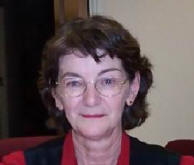Martha Young
Adams County Master Gardener

(5/30) Every year, as part of Penn State Extensionís Outreach, the Master Gardeners from Adams County plan a series of Garden Chats. They are held in our Trial Gardens at the County Extension Office, 670 Old Harrisburg Rd., Gettysburg, on Wednesday evenings for any interested gardener or non-gardener. They are free, and no registration is required.
Garden Chats begin on June 21 and run through July 12, August 2, and Sept. 13. All begin at 6 p.m. Participants are asked to meet at the gardens. The parking is next to the gardens.
This year, 26 plots are on display where individual gardeners plan and plant their 2017 gardens. Most of the plots contain annuals and vegetables. Some contain perennials whose progress is measured through the years. We also publish a yearly booklet to let the public know what the plots contain and how they are cared for.
 Some plots contain one type of plant. For instance, Master Gardener Pam Keefer is trialing several varieties of lavender for hardiness, fragrance, size, and bloom. Lavender in general is a good plant to put in your garden, keeping in mind that they don't like humidity and/or wet winter
conditions. One of the goals of this garden is to have blooms from late spring through late summer. This is the second year for this bed, and the plants seem to have come through the winter successfully.
Some plots contain one type of plant. For instance, Master Gardener Pam Keefer is trialing several varieties of lavender for hardiness, fragrance, size, and bloom. Lavender in general is a good plant to put in your garden, keeping in mind that they don't like humidity and/or wet winter
conditions. One of the goals of this garden is to have blooms from late spring through late summer. This is the second year for this bed, and the plants seem to have come through the winter successfully.
Another bed in its second year is the bird garden. Master Gardener Audrey Hillman's plot has many annuals that produce a large number of seeds. A bird garden should certainly look pretty, but its real value is the number of seeds that are produced for birds to eat. In a bird garden, plants are left to go to seed in the fall and are not cleaned up
until the spring. The garden may look a little messy, but the birds will appreciate having stalks topped with seeds sticking out of the snow during the winter. There are many plants that keep their seeds into the fall and winter--asters, coneflowers, bidens, rudbeckia, millet and other grasses. A little more unusual in a flower garden is planting lettuce and spinach and
allowing it to go to seed for the birds. Other vegetable plants that go to seed quickly are radishes and broccoli. Many people will intersperse flowers and vegetables to attract birds to the seeds and pollinators to the flowers.
The children's garden is filled with many kinds of freely blooming annuals like marigolds, Shasta daisies, red salvia, and other bright-colored flowers that are easy to pick. The children love to squeeze the flowers of the snapdragons. The star of this garden is the popcorn plant, a new annual that grows like the plant in the play "Little Shop of
Horrors." This plant has topped 5 to 6 feet in a summer. Its other claim to fame is the scent of movie popcorn when you brush against it. Master Gardeners Debby Prior and Dorothy Disney plan and plant this garden in conjunction with Explorers' Day Camp that is held every year in June.
Three unique beds in the Trial Gardens have been in existence for several years. They are labeled 'Xeriscape.' This term originated in the western US where water is at a premium and gardeners must be creative in planting and caring for flower gardens. These three beds contain plants that are never watered once the plants are in the soil. They get
one watering when they are planted, and then their success depends on the soil (deep and fertile with compost on top), whatever rain comes along, and frequent weeding to keep any available water going only to the plants. Many are natives, but not all. Natives to Pennsylvania and especially to Adams County and the mid-Atlantic region in general will do better in the native
soil than bringing in exotics that need a lot more water and care to do well. Also these plants are chosen with an eye to encouraging pollinators to visit the gardens.
Pollinator beds are also big on the Master Gardener list of useful plants. Right now, we have a bed filled with several types of Monarda (bee balm) and coreopsis. These plants are monitored weekly while blooming, and a team of two people count the different types of bees and insects that are attracted to these plants. The plants are monitored for
three years and then other plants are chosen and researched for pollinators. Over the years of monitoring specific plants, we have found that agastache (Blue Fortune and Black Adder) have been extremely successful at bringing in bees. There are also many herbs that attract pollinators. Mountain mint stands out and dill, fennel, basil, and most other herbs that are left to
go to seed will attract all sorts of bees and insects.
There is another bed filled with more than 10 types of goldenrod, and every one of these plants attracts bees and insects. They start blooming in August, and last year one was still blooming and attracting bees in November.
This is just a small sampling of the diversity of plants that are available in our Trial Gardens. You can also view our Hedgerow which has grown by leaps and bounds, and there are Community Gardens to look at as well. These beds are rented by individuals who care for mostly vegetables for themselves or to share with the community.
Read other articles by Martie Young